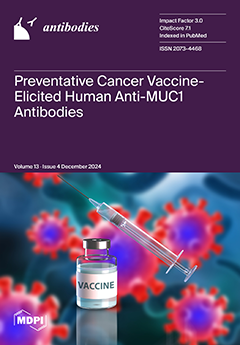Background/Objectives: Pemphigus comprises a diverse group of disorders within the autoimmune bullous dermatoses (AIBDs) spectrum. Among these, pemphigus vulgaris (PV) and pemphigus foliaceus (PF) are the most commonly encountered variants. Despite its rarity, this condition can pose a life-threatening risk. We aimed to
[...] Read more.
Background/Objectives: Pemphigus comprises a diverse group of disorders within the autoimmune bullous dermatoses (AIBDs) spectrum. Among these, pemphigus vulgaris (PV) and pemphigus foliaceus (PF) are the most commonly encountered variants. Despite its rarity, this condition can pose a life-threatening risk. We aimed to assess clinical characteristics, comorbidities, medication, as well as the treatment of various types of pemphigus in pemphigus patients. Methods: We gathered data from 69 patients treated in the Department of Dermatology in the years 2016–2023. The investigation included sex, age at diagnosis, type of pemphigus, comorbidities and medications, presence of neoplasms and treatment of pemphigus, as well as enzyme-linked immunosorbent assay (ELISA) and direct immunofluorescence (DIF) results. The data were statistically analyzed with the
p-value set at 0.05. Results: The study group comprised 69 patients, including 41 women and 28 men. The mean age at diagnosis was 56.89 years +/− 15.42 years. A total of 79.31% of the patients were diagnosed with PV and the following 26.09% with PF. The most common comorbidities were arterial hypertension, hypercholesterolemia, and diabetes mellitus. The dominant treatment regimen was the systemic use of glucocorticosteroids (GCSs; 90% and 94% of PV and PF patients, respectively). More than half of the patients received at least one GCS-sparing treatment, including dapsone and rituximab. We observed a significantly frequent presence of IgG deposits in DIF in patients with PF (
p = 0.0217) and a subsequent correlation between the concurrent presence of IgG deposits in DIF and anti-DSG1 antibodies in ELISA testing (
p = 0.0469). The combination of IgG, IgG1, IgG4, and C3 deposits was more often existent in PF patients (
p = 0.0054) and the combination of IgG4 and C3 deposits in PV patients (
p = 0.0339). We also found a positive correlation between the level of anti-DSG1 antibodies and the age at diagnosis (
p = 0.0298). Conclusions: Patients with pemphigus are very often diagnosed with significant comorbidities and take diverse medication, which shows that the treatment of pemphigus should follow a multidisciplinary approach. Accurate analysis of the clinical condition of the patients, as well as the results of the ELISA panel or DIF, is crucial for a successful diagnostic and therapeutic process.
Full article






